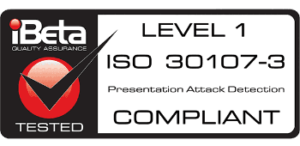Biometric data refers to unique physical or behavioral characteristics used for identification and verification. This technology has become increasingly important in various sectors, enhancing security and improving user experience.
There are different types of biometric characteristics, including physiological traits like facial recognition, as well as behavioral traits like voice patterns.
Understanding these aspects is essential for exploring the broader applications and implications of biometric systems.
What does biometric data mean?
Biometrics involves the measurement and statistical analysis of people’s unique physical or behavioral characteristics. This technology is utilized for identification and access control.
Definition and key characteristics
Biometric data refers to a category of identification methods based on measurable physical characteristics. These characteristics can be unique to an individual, making them reliable attributes for confirming identity.
Biometric systems analyze various biological traits or behavior patterns to distinguish one person from another. The reliability of biometric data stems from the natural variance in features, such as fingerprints or facial structures, which are generally more difficult to replicate or forge compared to traditional identification methods like passwords or ID cards.
Types of biometric identifiers
Biometrics can be grouped into two main categories: physiological and behavioral characteristics. Understanding these two types can provide insight into how biometric systems function and their applications.
Physiological Biometrics
- Facial Recognition: Utilizing facial features, this technology analyzes the shape, distance between features, and the overall face geometry. With advancements in artificial intelligence, facial recognition systems have become more sophisticated, providing enhanced accuracy in identifying individuals.
- Voice Recognition: This technology examines vocal patterns. Each person’s voice has distinctive characteristics including tone, pitch, and cadence, making it an effective means of verification.
- Fingerprint Recognition: This is one of the most widely used biometric methods. Fingerprints are unique to each individual, and their patterns remain unchanged over time, making them a reliable form of identification.
- Retina and Iris Scans: These methods involve analyzing the unique patterns in the eye’s retina or iris. These traits offer high precision and are considerably difficult to replicate.
Behavioral Biometrics
- Signature Verification: This biometric measure assesses the unique characteristics of an individual’s signature, such as speed, pressure, and stroke order. Signature biometrics can enhance security in transactions that require handwritten signatures.
- Gait Analysis: By analyzing the way a person walks, gait analysis can serve as a behavioral biometric. This method measures various aspects of movement, which can be unique to individuals.
- Typing Dynamics: This involves assessing the rhythm and pattern of how a person types. Metrics like the speed and pressure applied to keys can provide insights into user identity, making it a valuable application in online security.
Examples of biometric data
Understanding the mechanisms behind biometric systems is essential to appreciate their effectiveness and reliability. These systems operate through a carefully defined process that includes capturing, processing, and verifying biometric data.
Capture and Enrollment Process
The capture and enrollment process is crucial for establishing a reliable biometric system. It involves several steps to ensure that accurate biometric samples are created and stored securely for future identification and verification.
Creating Biometric Samples
During the creation of biometric samples, various technologies come into play depending on the type of biometric data being collected. For instance, when capturing fingerprints, a scanner or sensor records the unique ridge patterns. In facial recognition systems, a camera captures various angles and lighting conditions of an individual’s face. The quality of the sample is critical; thus, it is important to ensure optimal conditions during the capturing process. Accurate samples are essential for effective enrollment and subsequent identification.
Storing Biometric Data
Once biometric samples are created, they are converted into a digital format and stored in databases. This storage must be secure to protect sensitive personal information. Biometric data can be stored as Renewable Biometric Reference (RBRs), wich represent a critical technological evolution in digital identity protection.
Developed in response to the limitations and and risks of traditional biometric templates, RBRs are defined in the ISO/IEC 24745:2022 standard in the ISO/IEC 24745:2022 standard. This standard describes the characteristics of RBRs that, when analysed from a privacy and security perspective, are from a privacy and security perspective, enable privacy by default and by design, address the concerns expressed by supervisory authorities in relation to traditional biometric templates.
It should be noted that the ISO standard does not specify a technical formula for converting a biometric template into an
RBR, which encourages the continued development of innovative solutions that enhance privacy and security.
This flexibility is only possible thanks to a technologically neutral regulation.
By storing templates rather than raw data, systems can enhance security while maintaining the ability to identify individuals effectively. It is essential that these databases incorporate strong encryption methods and access controls to prevent unauthorized access and potential data breaches.
Biometric Identification and Verification
Once the biometric data is captured and stored, the system can perform identification and verification using two primary methodologies: identification and verification. Each method serves different purposes within biometric systems.
Identification Systems (1:N)
Identification systems operate on a one-to-many (1:N) basis. In this scenario, a biometric sample is compared against multiple stored RBR’s in a database. During the identification process, a user presents their biometric sample, and the system searches through the entire database to find a match. This is particularly useful in scenarios such as border control, where an individual’s biometric data must be verified against countless records. The system utilizes algorithms to assess similarities and generate a match score, indicating how closely the sample corresponds to each stored RBR. This score is pivotal in determining the identity of the individual.
Verification Systems (1:1)
In contrast, verification systems function on a one-to-one (1:1) basis. This method involves confirming whether a captured biometric sample matches a specific registered RBR. For example, when a user attempts to unlock their smartphone, the system compares the scanned fingerprint to the registered RBR stored on the device. Verification systems are generally faster as they deal with a singular comparison rather than searching through an entire database. This model is widely used in applications that require immediate authentication, including access to secure facilities, online banking, and personal devices.
Use Cases for Biometric Technology
Biometric technology has found numerous applications across various sectors, enhancing security, user convenience, and operational efficiency. The integration of biometric systems is increasingly evident in both high-security environments and everyday life.
Biometric Security Applications
Biometric security applications have revolutionized how organizations protect sensitive information and maintain safety. From national defense to financial institutions, various sectors leverage biometric technology to improve identification processes.
National Security and Border Control
In the realm of national security, governments utilize biometric systems to bolster border control and prevent illegal entry. These systems analyze unique biological traits to verify identities quickly and accurately. For example:
- Facial recognition technology is employed at checkpoints to compare travelers’ faces against a database of known individuals.
- Fingerprint scanners are used to ensure that individuals crossing borders have not been involved in criminal activities.
- Integrated biometric systems enable real-time data sharing between agencies, enhancing investigative processes.
By implementing these measures, countries can enhance their overall security infrastructure, ensuring that only authorized individuals gain access to vital regions.
Financial Services Authentication
In the finance sector, biometric authentication has proven crucial in mitigating fraud and enhancing customer confidence. Many institutions incorporate biometric solutions in various ways:
- Banking apps utilize fingerprint and facial recognition features to secure transactions.
- Voice recognition technology is employed in call centers, allowing customers to verify their identities seamlessly.
- ATMs equipped with biometric scanners authenticate users before granting access to accounts, reducing the risk of unauthorized withdrawals.
Such measures not only protect sensitive financial data but also streamline the user experience, creating a more secure banking environment.
Everyday Use of Biometrics
The application of biometric systems extends beyond security-focused industries. These technologies are becoming part of daily routines for many individuals, enhancing convenience and personal security.
Mobile Device Security
Mobile devices have integrated biometric features, making authentication faster and more secure. Users can unlock their phones or authorize purchases using their unique traits. Key innovations include:
- Fingerprint scanners, commonly found on smartphones, allow users to access their devices instantly and securely.
- Facial recognition technology enhances device security by creating a three-dimensional map of a user’s face.
- Voice recognition is used for virtual assistants, enabling users to perform tasks with minimal effort.
This accessibility encourages users to adopt stronger security practices while enjoying the convenience of biometric features.
Workplace Access Control
Many organizations implement biometric systems to control access to sensitive areas within business premises. By utilizing these technologies, employers can enhance security measures against unauthorized access.

Advantages of Using Biometric Data
The implementation of biometric data presents several advantages that enhance security, improve user convenience, and streamline processes across various sectors. These benefits have contributed to the growing adoption of biometric systems globally.
Enhanced Security and Accuracy
One of the most significant advantages of biometric technology is the enhanced security it offers. Biometric systems are difficult to forge or duplicate, making them a more secure alternative to traditional authentication methods, such as passwords and ID cards. This security is vital in areas prone to fraud and unauthorized access.
- Unique Characteristics: Biometric traits are inherently unique to each individual, ensuring a high level of accuracy in identification.
- Reduction of Identity Theft: Since biometric data is difficult to replicate, the risk of identity theft is considerably minimized.
- Automated Identity Verification: Biometric systems can quickly verify identities against databases, significantly speeding up access control processes.
Convenience and User Experience
Biometric systems cater to modern user expectations for convenience. Users can authenticate their identities with minimal effort, enhancing their overall experience in various applications.
- Quick Access: Biometric identification allows for rapid authentication, eliminating lengthy password entry or ID checks.
- Inherent Factors: Users do not need to remember passwords or carry physical cards, as biometric traits are always accessible.
- Integration with Technology: As smartphones and devices increasingly use biometric systems, users can enjoy seamless interactions with their devices.
Biometric Data Security and Privacy Concerns
As the use of biometric data grows, understanding the security and privacy implications becomes critical. Safeguarding this sensitive information is paramount to prevent unauthorized access and misuse.
Protecting Biometric Information
Protecting biometric information involves utilizing effective security measures to ensure data integrity. This includes not only technological solutions but also organizational policies aimed at data protection.
Database and Storage Security
Securing biometric databases is crucial in mitigating risks associated with data breaches. Effective database security measures include:
- Encryption of stored biometric data to prevent unauthorized access.
- Multifactor authentication systems to verify users accessing sensitive data.
- Regular updates and patches to software systems to protect against vulnerabilities.
- Physical security measures within data centers to control access to servers containing biometric information.
Employing these strategies can significantly reduce the chances of unauthorized individuals accessing biometric databases. Regular audits and assessments are essential to identify potential weaknesses and improve security protocols.
Addressing Data Breaches
Data breaches pose a significant threat to biometric information security. When such incidents occur, swift and effective responses are vital. Key steps in addressing data breaches include:
- Immediate investigation to determine the scope and source of the breach.
- Notification of affected individuals and stakeholders, providing transparency about potential risks.
- Implementation of remediation measures to prevent future occurrences.
- Collaboration with law enforcement to address any criminal activity related to the breach.
By having a structured response plan in place, organizations can minimize the impact of data breaches involving biometric data, maintaining trust and transparency with users.
GDPR and Biometric Information
Privacy Regulations and Compliance
Various regulations exist to protect individual privacy rights regarding biometric data collection and storage. Key regulations include:
- The General Data Protection Regulation (GDPR) which enforces strict guidelines on data processing within the European Union.
- The California Consumer Privacy Act (CCPA), providing California residents with rights regarding their personal data.
- State-level laws that govern biometric information usage, such as the Illinois Biometric Information Privacy Act (BIPA).
Organizations must ensure compliance with these regulations to avoid significant penalties and legal repercussions. Establishing robust privacy policies is essential for fostering trust with users.
How GDPR Defines and Regulates It
Under the General Data Protection Regulation (GDPR), biometric data is classified as a special category of personal data. This means it is subject to stricter processing rules to ensure privacy and security. GDPR mandates explicit consent for collecting biometric data, limits its use to specific purposes, and enforces stringent requirements for its protection.
Ensuring Compliance in Practice
Organizations handling biometric data must conduct impact assessments, implement appropriate safeguards, and ensure transparency with users. Compliance with GDPR not only protects individuals’ rights but also helps organizations avoid substantial fines and reputational damage.

Future Trends in Biometric Technology
The landscape of biometric technology is rapidly evolving, influenced by advancements in artificial intelligence and the increasing demand for secure identification solutions. Innovations are reshaping how biometric systems operate and integrate within various sectors.
Innovations in Biometrics
There has been significant progress in biometric technologies, propelled by research and development in various fields. These innovations enhance accuracy, speed, and security across applications.
AI and Machine Learning in Biometrics
Artificial intelligence (AI) and machine learning (ML) are becoming integral to biometric systems. By leveraging large datasets, AI algorithms can improve facial recognition, voice identification, and fingerprint analysis. These technologies can adapt and learn from new information, enhancing their effectiveness over time.
- Improved Accuracy: AI-driven systems continuously refine their algorithms, reducing false positives and negatives.
- Real-time Processing: The integration of AI allows systems to analyze biometric data instantly, making it applicable in high-stakes environments like security and finance.
- Adaptive Learning: Machine learning enables systems to evolve with emerging threats, allowing for more robust security measures.
Emerging Biometric Modalities
As technology progresses, various new biometric modalities are gaining traction. These include:
- Vein Recognition: This method recognizes unique patterns in the veins of the hands or fingers, offering a higher level of security due to the difficulty of replication.
- Gait Recognition: Analyzing a person’s walking pattern provides an identification method that is contactless and non-invasive.
- Ear Shape Recognition: Utilizing the unique shape of an individual’s ear for identification is emerging as a promising biometric method.
These modalities not only enhance security measures but also cater to diverse applications, providing alternatives where traditional methods may fall short.
The Role of Biometrics in Identity Management
Biometric technology plays a crucial role in modern identity management systems, providing more secure and efficient alternatives to traditional methods.
- Streamlined Authentication: Organizations implement biometrics for quick verification processes, reducing wait times and improving user experience.
- Enhanced Security Measures: By utilizing biometric data, organizations minimize the risk of identity theft and unauthorized access.
- Integration with Digital Services: Biometrics are increasingly linked with online services for smoother transactions and secure access, especially in banking and healthcare sectors.
As identity management continues to evolve, the integration of biometric systems is becoming fundamental in achieving seamless security while safeguarding personal information.

























